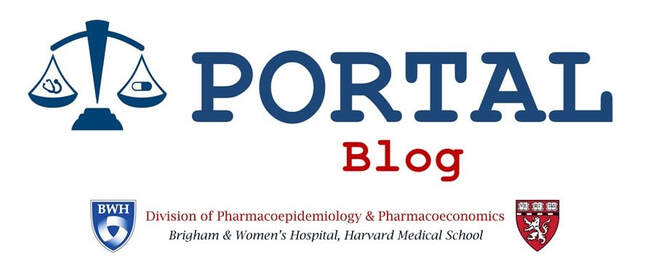|
Liam Bendicksen
This blog post originally appeared on the Incidental Economist blog and can be found here. Despite overwhelming agreement among voters that the cost of prescription drugs is too high, Congress has yet to pass substantive legislation in recent years to tackle drug prices. In the absence of federal action, New York lawmakers stepped up to the task in 2017, establishing a drug spending cap in the state’s Medicaid program. Setting an annual limit on the state Medicaid program’s prescription drug spending, however, meant that the legislature also needed to give Medicaid officials a way to keep costs down. So how has New York gone about cutting excess drug spending? The answer is that the New York legislature gave officials the power to systematically limit the price of high-cost prescription drugs to their therapeutic value. More specifically, the state authorized its Medicaid Drug Utilization Review Board to conduct reviews of the value of expensive drugs when officials project that the program’s annual drug spending cap will be exceeded. After the board determines a value-based price for a drug, the state then negotiates additional rebates with the drug’s manufacturer. To compel manufacturers to come to the table and concede supplemental rebates, the New York Medicaid program may implement a number of strategies intended to lower manufacturers’ profits if they don’t comply. These bargaining chips include instituting prior authorization requirements, directing Medicaid managed care organizations to remove the drug from their formularies, and limiting reimbursement for provider-administered therapies that are billed under the medical benefit. Under the terms of the Medicaid Drug Rebate Program, however, New York may not remove a drug from its Medicaid formulary. This means that using a state-run approval process, beneficiaries can still receive Medicaid coverage for drugs that are not on their managed care plan’s formulary. Though the New York Medicaid program was the first public payer in the US to limit reimbursement for prescription drugs based on therapeutic value, this practice is common in many European countries. The New York Medicaid Drug Utilization Review Board utilizes many of the same tools used in health technology assessment in Europe, including quality-adjusted life-years (QALYs) and reference pricing, though in a more limited capacity. To date, the New York Medicaid Drug Utilization Review Board has completed three pricing reviews. In these reviews, the board determined target supplemental rebate amounts for lumacaftor/ivacaftor (Orkambi), infliximab (Remicade), and nusinersen (Spinraza). Following the board’s reviews of lumacaftor/ivacaftor and infliximab, the New York Department of Health was able to reach confidential supplemental rebate agreements for both drugs with their respective manufacturers. In the case of nusinersen, the board only recently announced the completion of their review at a public meeting on July 23, 2020. Though negotiations between New York officials and the drug’s manufacturer Biogen will be kept confidential, the state’s prospects for securing additional rebates seem promising in light of the drug’s billing under the medical benefit in Medicaid. This is the case because of the board’s ability to direct Medicaid managed care organizations to reduce reimbursement for provider-administered drugs billed under the medical benefit, which includes nusinersen, if manufacturers refuse to concede adequate supplemental rebates. It’s possible that this same leverage helped prompt Janssen Pharmaceuticals, the manufacturer of infliximab, to agree to pay additional rebates to New York after the board’s review of the drug last year. Efforts to conduct assessments of the value of drugs and other medical goods and services in the public sector in the US have been met with fiery political opposition. After all, who could forget Sarah Palin’s infamous and wildly inaccurate claims about how the Affordable Care Act would create “death panels”? More than a decade later, the consequences of rejecting cost-effectiveness research are starting to come into focus. Today, rising brand-name prescription drug prices (and increasingly-prevalent high-deductible health plans) pose a threat to Americans’ financial security and to the health of our communities. Political controversies notwithstanding, using cost-effectiveness research and analyses to pay for high-value prescription drugs can help US patients afford the drugs they need as prices continue to rise. While value is difficult to measure or even define in health care, working through those difficult questions is well worth the reward of maximizing patient health and lowering costs. Value-based pricing frameworks, such as those used by the Institute for Clinical and Economic Review, are valuable tools that can help policymakers rationalize the way we pay for pharmaceuticals. Taxpayer dollars have bankrolled the pharmaceutical industry’s inflated bottom line for far too long. To protect Americans’ health and financial security, lawmakers across the country should follow the trailblazing example of the New York Medicaid Drug Utilization Review Board and join in the pursuit of systematically-achieved, value-based drug prices in the US. Comments are closed.
|
AuthorPORTAL Blog posts are authored by PORTAL faculty, trainees, and collaborators. Archives
January 2022
Categories |
|
Program On Regulation, Therapeutics And Law (PORTAL)
Division of Pharmacoepidemiology and Pharmacoeconomics 1620 Tremont Street, Suite 3030 Boston, MA 02120 |



 RSS Feed
RSS Feed
